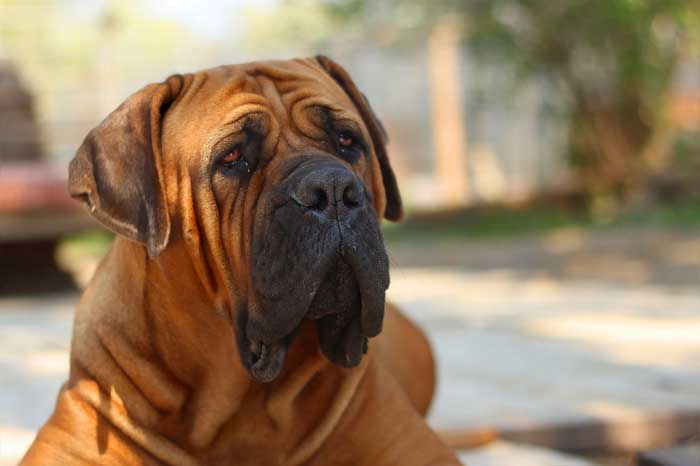There are several breeds of dogs that are characterized by their long, droopy jowls.
But why do dogs have jowls? What are they and what is the purpose of dog jowls?
It’s actually surprising to know that dog jowls have several practical uses. But also, although jowls give some physical advantages to dogs, they can cause some problems that must be considered and cared for.
For these reasons, it’s necessary and important to know more about the
What Are Dog Jowls?
Dog jowls are the loose skin around the dog’s mouth, cheeks, and throat. Although all dogs have this loose skin, when we talk about dog jowls, we mainly refer to the large, floppy and droopy jowls characteristic of some dogs.
Why Do Dogs Have Jowls?
One would think that jowls are only an aesthetic feature of some dog breeds. But in reality, dog jowls have several practical uses.
This explains why some dog breeds have longer and more prominent jowls than others.
The main uses and purposes of dog jowls are:
Help Picking up Scents
Hound dogs bred to track prey during hunting generally have long, loose jowls.
When they track down a smell, jowls hang down to the ground, brushing the ground. This helps to collect scents in the dog’s nose. This allows them to find and track scents, however small they may be.
Help With Swimming
Dogs bred to retrieve prey in the water often have long jowls. There are some water dogs like the Labrador Retriever that, although they don’t seem to have big jowls, have more than non-water dogs.
In water dogs, jowls help them create an airbag around their mouths, which helps them breathe more efficiently when they swim.
Provide Protection
In dogs that were bred to fight, jowls serve to protect the face. The loose skin of the jowls makes it difficult for another dog to bury the bite in the sensitive and important parts of the face.
A bite on the jowls is not as painful as on other parts of the body and, in case the bite is buried in the skin, it gives the dog enough mobility to return the bite.
10 Dog Breeds With Droopy Jowls
Some of the best-known dogs that have long droopy jowls are:
Basset Hound

The Basset Hound is a scenthounds-type hound dog. It’s a hunting dog bred to track down the smell of prey.
This breed is characterized for his long, loose jowls that help him pick up scents.
Bloodhound
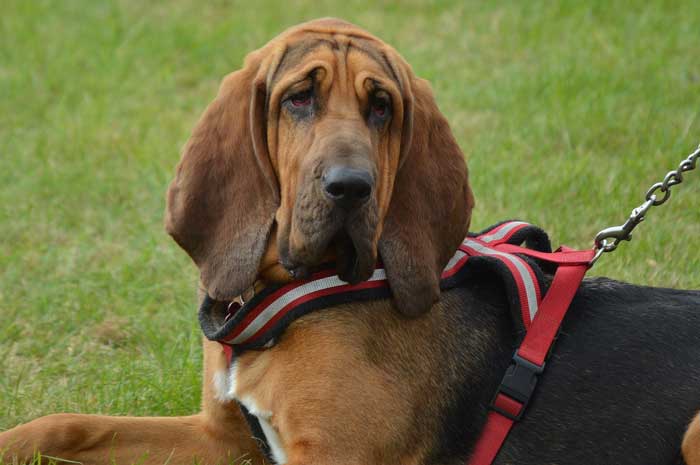
The Bloodhound is also a type of scenthound from the hound family. Although they are similar, they are two different breeds bred for the same purpose but in different places.
The Bloodhound was bred as a scent tracking dog in Belgium and is bigger and heavier than the Basset Hound.
Boxer

The Boxer is an is from the family of the extinct Bullenbeisser, a dog descendant of the Mastiff and Bulldogs.
The Bullenbeisser was a hunting dog that was used to chase and capture prey and hold them until hunters arrived.
Coming from hunting and fighting dogs, their jowls were originally intended to provide protection.
Bulldogs

The Bulldog is one of the most representative breeds of dogs with droopy and loose gills.
Previously used as a bait dog especially in the sport of bull-baiting. Hence its name “bull”.
Having been a bait dog, his big jowls served as protection.
Chow Chow
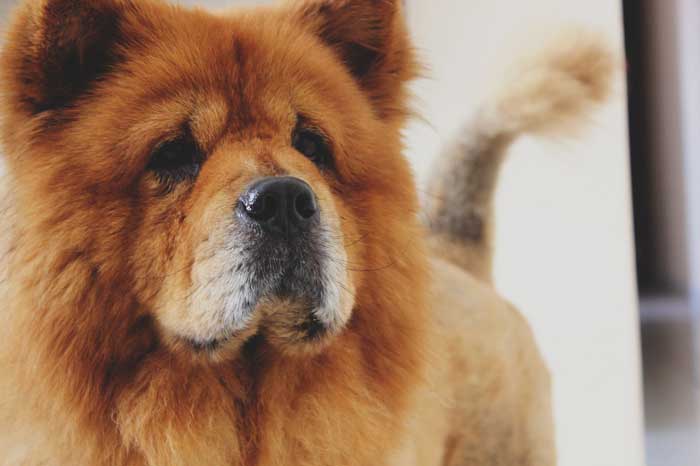
Characterized by its droopy large jowls and its dense fur, mainly on the neck, which gives it the appearance of having a lion-like mane.
Originally bred in northern China. It is believed that they were originally used as war dogs.
Great Dane
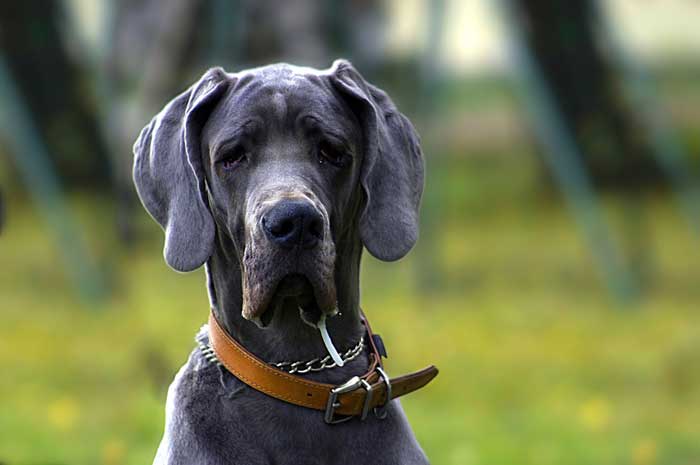
A descendant of the crossbreed between the Irish Wolfhounds and the English Mastiff. The Great Dane is one of the largest dogs and is also characterized by its long, drooping jowls.
The Great Dane was a catch dog used to seize large animals and hold them during hunting.
Mastiffs
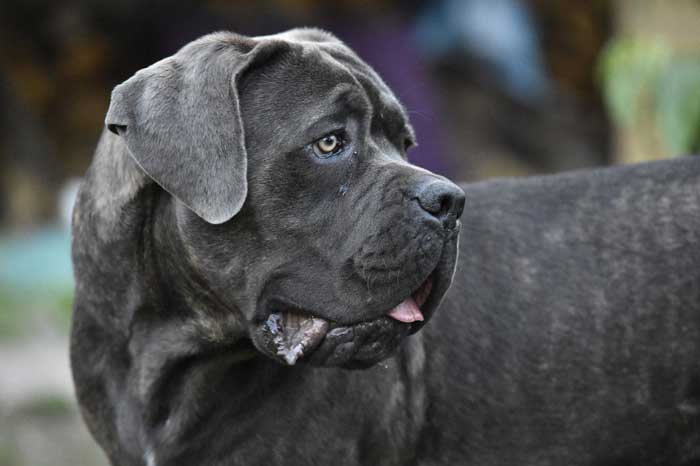
Mastiffs are a family of dog breeds that have historically been guard dogs and have been used as hunting dogs, war dogs, and for blood sports.
Most Mastiff breeds have long droopy jowls and some of the most representatives are:
- American Mastiff
- Bullmastiff
- Dogue de Bordeaux
- English Mastiff
- Neapolitan Mastiff
Newfoundland

It is a breed known for its giant size and intelligence. The Newfoundland is a water dog originally bred as working dogs for fishermen.
It is a dog that stands out for its ability to swim and is recognized as an excellent water rescue dog.
Saint Bernard

Famous for its large size, floppy jowls, and good temperament. The St. Bernard is a breed from the western Alps originally bred for rescue.
Being a rescue dog his jowls help him track scents and swim more efficiently to rescue in water.
Shar-Pei

Originally from China, the Shar-Pei is known for its deep wrinkles all over its body. Its characteristic loose skin, including its jowls, was developed to help it defend itself from the boar.
This dog was also used as a fighting dog, and its loose wrinkles provide great protection. Actually, the kind of extra protection that loose and droopy jowls provide, the Shar-Pei takes it all over the body.
Droopy Jowls and Dog Drooling
Drooling in dogs is usually normal. Although there are also times when it is not normal and may be a sign that something is wrong.
But dog breeds with long, loose jowls are known to drool excessively. This is usually normal in these dogs.
The reason these dogs drool so much is that the skin of the jowls folds into bags around the mouth. Saliva accumulates in these bags until it overflows from the mouth.
In these cases, there is not much that can be done. It is normal and there is no need to worry.
Although excessive drooling can be caused by medical reasons. So we must be aware of other signs and symptoms that could indicate that something is wrong.
Dog Jowls Related Diseases
Dogs with large jowls are more likely to have infections. If they don’t have proper oral hygiene, it’s common for moisture, bacteria and fungus to accumulate in the mouth.
Some of the most common diseases in dogs with long jowls are:
Lip Fold Dermatitis
Lip fold dermatitis occurs mainly in the folds around the mouth. It is an infection of the dog’s skin caused by bacteria that causes the skin to turn red and inflamed.
This condition causes the folds of the mouth to smell very bad and can also be very painful for dogs.
This disease can be prevented by regularly cleaning the skin folds to reduce the risk of infection.
Oral Papillomavirus
Canine oral papillomas are small, benign tumors found in the dog’s jowls, gums, throat, and tongue.
Caused by the papillomavirus, it’s highly contagious and is spread by dog-to-dog contact.
This disease if not treated properly becomes very painful for dogs and causes bad breath.
To properly treat any of the diseases mentioned above or an infection of the jowls, it is necessary to seek the help of a veterinarian as soon as possible.
But, to keep your dog healthy and to prevent a jowl infection, it’s necessary to clean his jowls and mouth regularly.
How to Clean a Dog’s Jowls
Cleaning dog jowls can be a challenge. Not all dogs allow their mouth areas to be touched.
You have to be patient and gentle, especially when you have sores or an infection, as it can be uncomfortable or painful for the dog. But gradually your dog will get used to having his jowls cleaned and handled.
To clean dog jowls, follow these steps:
- Soak a small cloth or clean gauze in warm water and wrap it around your finger.
- Gently wipe between the skin folds with the damp cloth.
- Remove the moisture from the folds with a clean dry towel.
- For best results, apply a pet dental spray on your dog’s jowls.
It is recommended to clean the folds of the dog’s jowls at least once a week.
Also, to prevent problems, you have to brush your dog’s teeth regularly to eliminate bacteria that accumulate in his mouth.
Final Thoughts
Long, loose and droopy dog jowls are not only an adorable feature of some dogs’ wrinkled faces. They also offer dogs some physiological benefits.
But these benefits come with their disadvantages.
So it is important to know them, take the necessary care and, if necessary, be able to help our dog.
Resources
- Why Does My Dog Drool So Much? by WebMD
- How to Disinfect a Dog’s Mouth by Cuteness

